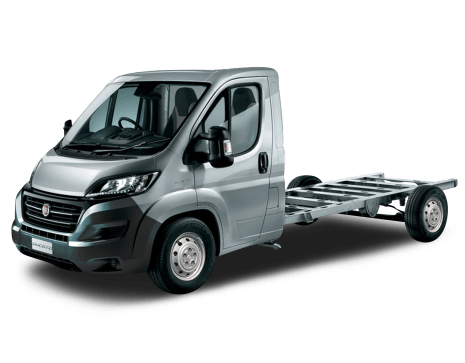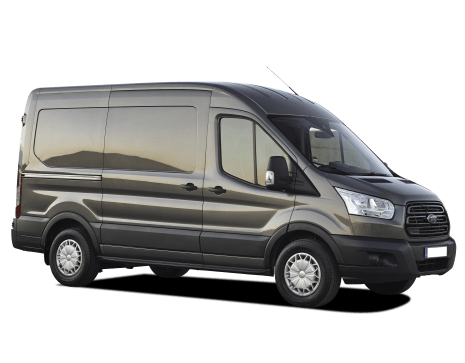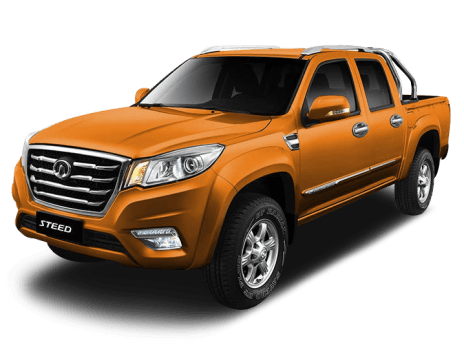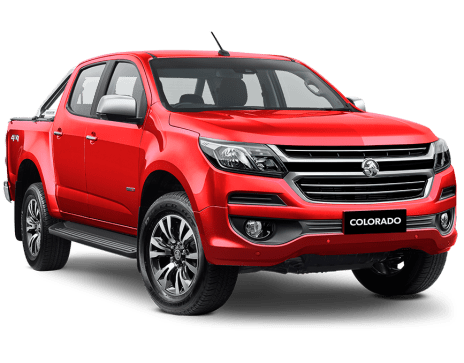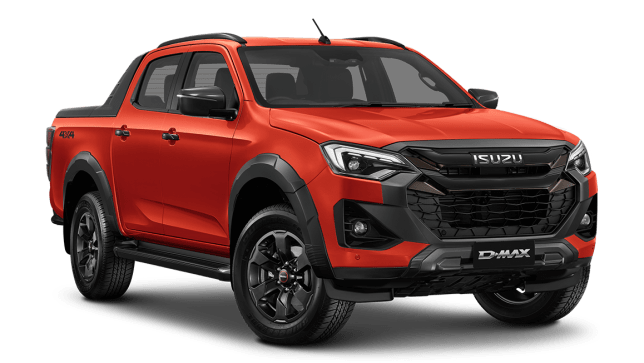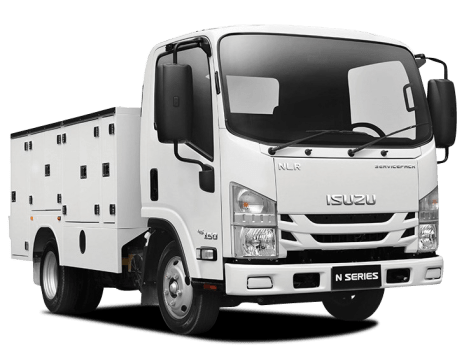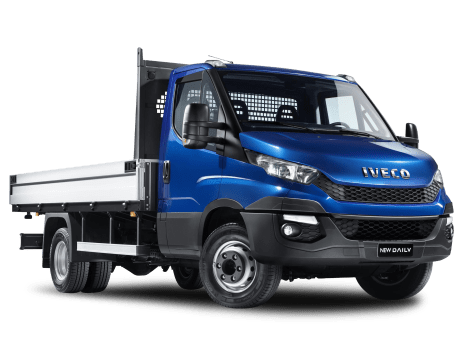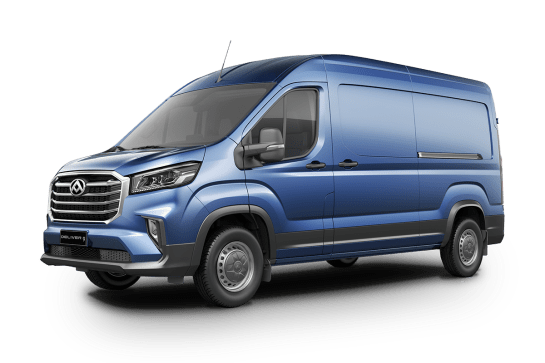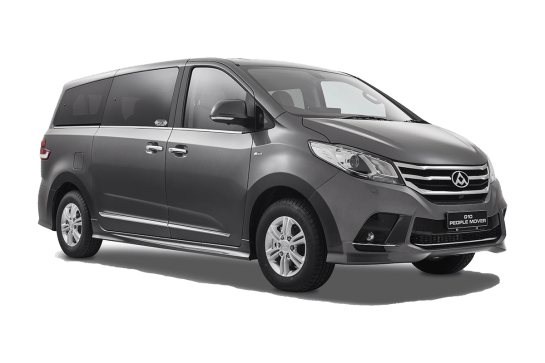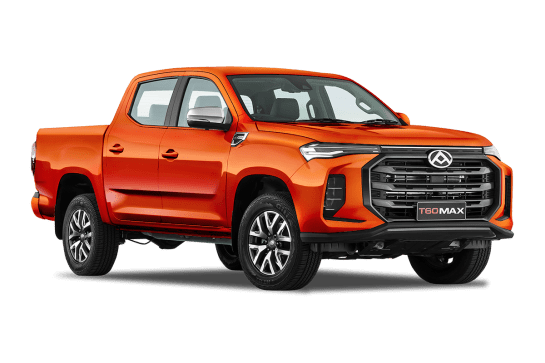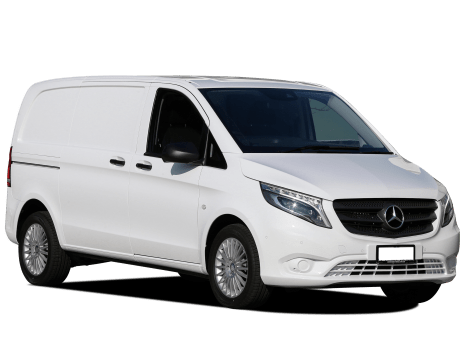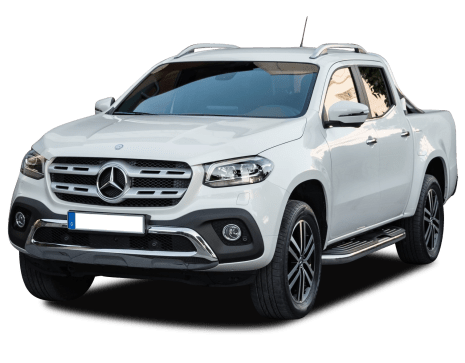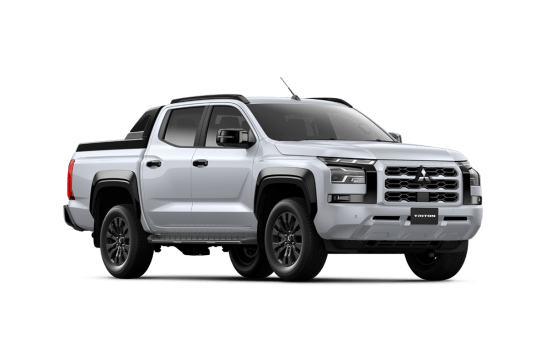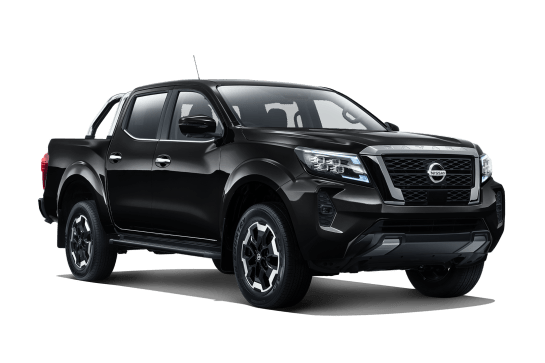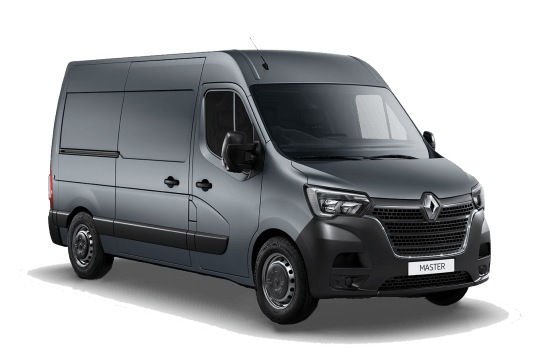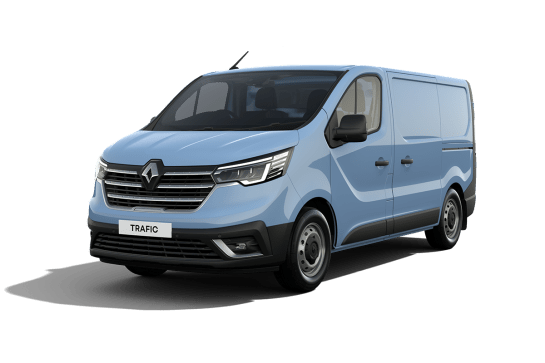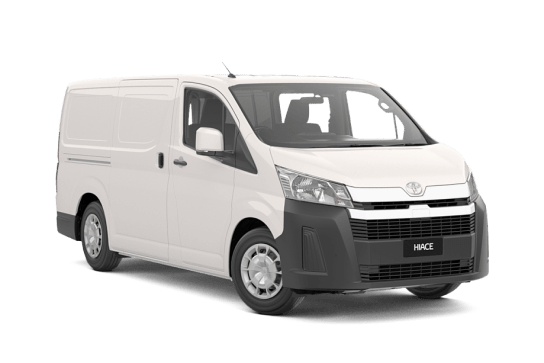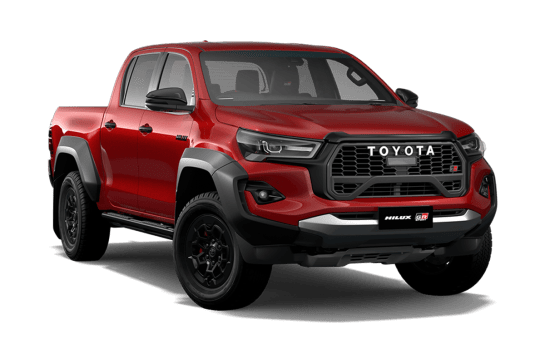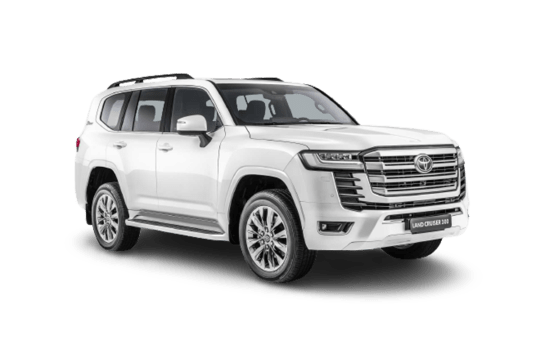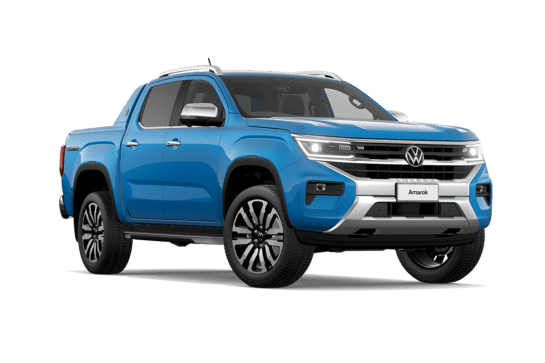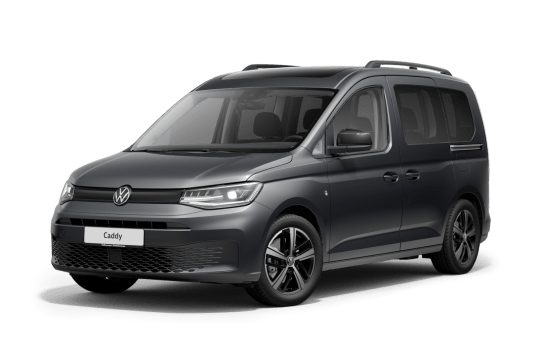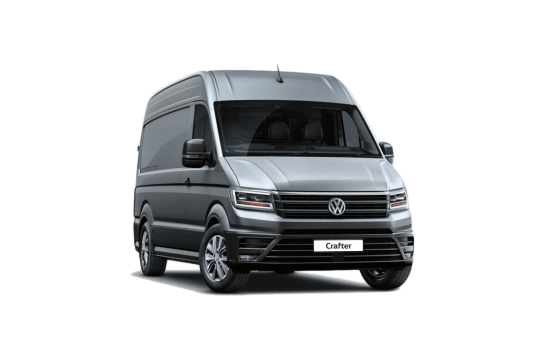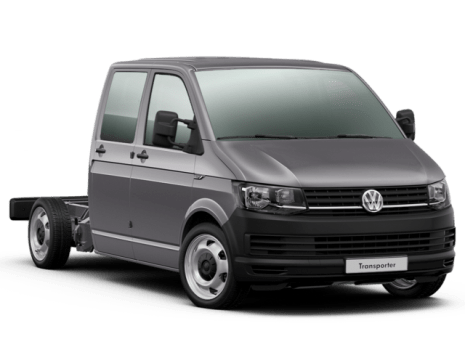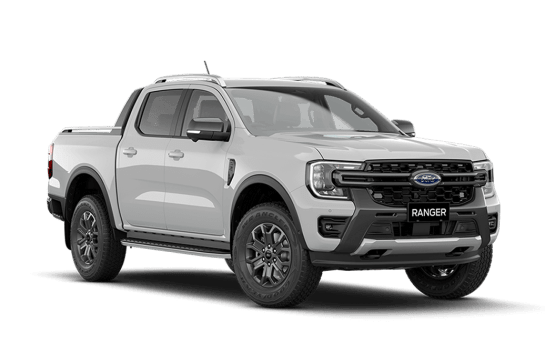
Ford Ranger VS Renault Trafic
Ford Ranger
Likes
- Doesn’t lose dual-cab ability
- Refined driving and interior
- Makes off-roading easy
Dislikes
- Prohibitively expensive
- Lacks truly usable EV range
- Adds weight to already-heavy ute
Renault Trafic
Likes
- Cabin storage
- GVM/CGM ratings
- Clever workstation (option)
Dislikes
- No ANCAP star rating
- No driver’s left footrest
- Paying extra for safety
Summary
Ford Ranger
Ford has been teasing the plug-in version of its sales chart darling for some time.
Long enough, in fact, that between the Ford Ranger PHEV program being confirmed in late 2023 and its 2025 arrival, two other plug-in hybrid utes have hit the market.
While there’s some overlap between the aims and target market of the Ranger PHEV and its challengers from China, the BYD Shark 6 and the GWM Cannon Alpha PHEV, Ford claims the Ranger’s capability hasn’t been compromised for the sake of electrification.
Read more about
- 2026 Ford Ranger will break new ground and move beyond established rivals the Toyota HiLux, BYD Shark 6, Nissan Navara and Mitsubishi Triton
- Ford Territory lives on! And so does the Escape and Puma. Bring them back to Australia along with the Explorer to help Ranger and Everest in the fight against the 2025 Toyota LandCruiser, Nissan Patrol, Kia Sorento and Toyota RAV4 | Opinion
- Ford could bring back famous axed car: Tie-up with Volkswagen could lead to the return of iconic hatchback as an electric car: Reports
Can a petrol engine and a big battery bring the same tough ute vibes as the rugged diesel variant that’s arguably become the segment benchmark?
There’s a lot riding on the Ranger PHEV and Ford Australia invited CarsGuide to the updated ute's local launch, including a variety of situations you might expect a dual-cab to be found in - on and off the asphalt.
| Safety rating | |
|---|---|
| Engine Type | 2.3L turbo |
| Fuel Type | — |
| Fuel Efficiency | 2.7L/100km |
| Seating | 5 seats |
Renault Trafic
After more than four decades in production and global sales exceeding 2.2 million units, the Trafic has established a loyal following in Australia.
In fact, according to Renault, Australia is the largest market for its popular mid-sized van outside of Europe. Perhaps this is not surprising given our thriving light commercial vehicle market, in which the 2.5-3.5-tonne GVM van segment is one of the most competitive with eight brands vying for buyers.
The current (third) generation Trafic, which was given a facelift and upgraded equipment/safety in 2022, is available in eight configurations. These include a crew van variant plus two wheelbase lengths and three equipment levels comprising Pro, Premium and Lifestyle.
Read more about
- Renault Kangoo 2025 review: E-Tech - GVM test
- Renault could be one of the best-selling car brands in Australia if it sold the hybrid Renault Koleos, Captur and Clio to take on the Toyota RAV4 Hybrid, Yaris Hybrid and Yaris Cross Hybrid as it does in Europe | Opinion
- Giant slaying 'little beast' Australian release confirmed: 2026 Renault 5 Turbo 3E is a Clio V6 successor coming to battle Hyundai Ioniq 5 N and Porsche Taycan
We recently became reacquainted with the Trafic, in base model workhorse guise, to see how it compares to the current crop of rivals from a tradie’s perspective.
| Safety rating | — |
|---|---|
| Engine Type | 2.0L turbo |
| Fuel Type | Diesel |
| Fuel Efficiency | 6.5L/100km |
| Seating | 3 seats |
Verdict
Ford Ranger7.6/10
The Ford Ranger is a strong starting point for a plug-in hybrid upgrade. And there are valid pros accompanying the addition of a high-voltage battery. But those benefits aren’t primarily seen on the road.
In fact, given its higher price, the Ranger PHEV loses out when compared to its BYD and GWM rivals, which offer more features and a far higher EV range at lower prices.
The Ranger doesn’t compromise its ‘ute-ness’ as its rivals do in different ways. But its target audience is likely relatively small. One that's willing to fork out for a capable, comfortable ute that can power a campsite or run tools on the job.
If you want an EV that just looks like a ute, this isn’t it. But if you're after a dual cab that can do proper ute things, with a bonus when it comes to efficiency and convenience, you’ll need deep pockets.
Note: CarsGuide attended this event as a guest of the manufacturer, with accommodation and meals provided.
Renault Trafic8.1/10
The Renault Trafic is a practical and capable workhorse, but then so are some other mid-sized van rivals which sell in greater numbers and come standard with five-star safety credentials. Therefore, a potential buyer must be prepared to accept the Trafic’s inferior standard safety menu (or pay extra to enhance it) to exploit its numerous strengths in a working role.
Design
Ford Ranger
The Ford Ranger is still one of the best-looking utes available, with a strong brand identity and a lack of design features that lean into trends - perhaps aside from the ‘C-shaped’ DRL signature.
There are only a few hints that any given Ranger you might be looking at is a plug-in hybrid, with the vehicle’s panels and general design features looking primarily the same.
The most obvious change is fender badging that outs the Ranger as a ‘PHEV’, though its lettering isn’t too ‘shouty’.
But to those more familiar with the Ranger, or anyone able to have a proper look around a PHEV, there are a couple of other giveaways.
For example, the Ranger plug-in has a new set of wheel designs that range from the 17-inch alloys on the XLT to the Stormtrak-specific 18s featuring 'Chill Grey' inserts as trim accents.
The Stormtrak can also be had in Chill Grey, the colour being exclusive to that variant along with the aforementioned unique trim design.
There are also plug outlets in the ute’s tub for access to the Ranger’s battery power. Harder to spot if you’re looking at one of the higher-spec variants that feature a roller cover.
Inside, it’s a similar story with the PHEV’s interior being standard Ranger fare aside from the button that controls its EV modes.
Renault Trafic
Our LWB example rides on a sizeable 3498mm wheelbase with four-wheel disc brakes, rack and pinion steering and MacPherson strut front suspension.
The rear suspension uses torsion bar primary springing, supplemented by a pair of secondary coil springs for carrying heavy loads.
Its 1967mm height ensures access to height-limited areas like multi-storey car parks and underground loading zones, but its lengthy wheelbase and front wheel-drive configuration combine to produce a relatively large 13.8-metre turning circle.
The Pro’s no-frills work focus results in extensive use of unpainted dark grey plastic in external areas where bumps and scrapes usually occur in hard-working vans, including the door mirror shells, wheel hubcaps, front/rear bumpers (including the rear pillars from top to bottom) and along the sides.
As a result, the Trafic has a robust and purposeful appearance, combined with a neat and practical cabin design with seating for three on a tasteful blend of contrasting grey fabrics. Hard surfaces are enhanced with satin chrome highlights.
The minimalist dash design (thankfully) provides physical ‘piano key’ buttons for numerous functions, plus there’s a trio of large manual dials to control fan speed, air-flow and cabin temperature in preference to distracting touchscreen prompts.
Practicality
Ford Ranger
The Ford Ranger’s interior is impressive for a dual-cab ute when it comes to layout and functionality.
A large 12-inch touchscreen dominates the central space on the dash, but there are still physical controls for the climate settings and the screen has shortcuts to main functions thanks to Ford’s 'Sync' software.
A big 12.4-inch driver display is similarly handy, being clear in its layout and able to be customised to the extent you’d expect from a modern bit of kit.
As mentioned, in the XLT you miss out on a few goodies, but the phone charger found in other variants is placed out of the way, under the screen and behind the gear shift.
Cupholders are similarly out of the way of any buttons or controls, and the gear-shifter itself is mercifully a traditional one rather than a dial or buttons.
With everything in an ergonomically sensible place, it’s similarly comforting that the seats and the steering wheel can be adjusted to find a suitable position.
It’s still a dual-cab ute, so don’t anticipate ‘melt-into-the-seat’ levels of comfort, but the space on offer in the front and rear seats is enough for an adult to feel at ease on even a long trip.
Behind the cabin, there’s space for two euro pallets according to Ford, with a payload as high as 973kg for the XLT. The Stormtrak’s 808kg payload is the lowest of the bunch, with Sport (934kg) and Wildtrak (885kg) slotting in between.
There’s a spare tyre underneath the tub and the ability to tow a 3500kg braked trailer - all combining to make it the most functional workhorse on offer in the plug-in hybrid ute segment. The GWM Cannon Alpha PHEV can tow 3.5-tonne and the BYD Shark 6’s payload is okay, but neither can do it all.
That said, the Ranger falls short in the plug-in game, which we’ll get to shortly.
Renault Trafic
With its relatively light 1816kg kerb weight and 3070kg GVM, our test vehicle has a substantial 1254kg payload rating which is almost 200kg higher than Toyota’s HiAce LWB (1055kg).
Its 1630kg braked tow rating is also higher than the HiAce’s 1500kg limit and with its 4700kg GCM (or how much it can legally carry and tow at the same time) the Trafic (like the HiAce) can haul its maximum payload while towing its maximum trailer weight.
Standard cargo bay access is through a single kerbside-sliding door or glazed swing-up tailgate, but a right-side sliding door and glazed symmetrical rear barn-doors with forklift-friendly 180-degree opening (the latter as fitted to our test vehicle) are available as options. The cargo bay walls and doors are lined to mid-height.
The load floor is 2937mm long and 1662mm wide, with 1268mm between the rear-wheel housings. So, it can carry up to two standard 1165mm-square Aussie pallets or up to three 1200 x 800mm Euro pallets, secured by a choice of eight load-anchorage points.
The cargo bay offers a competitive 6.55 cubic metres of load volume. Our example is fitted with a 12mm-ply non-slip floor kit and cube shelving kit provided by local industry supplier Autosafe. According to Renault, this tradie-focused set-up retails for $5254 including freight and installation.
The fixed two-passenger bench seat has a lap-sash belt for the central passenger and even someone my height (186cm) can get reasonably comfortable in the middle of a crew of three, albeit with knees competing for space with the prominent dash protrusion that houses the gearshift. By contrast, the outer passenger has ample knee and foot room.
The cabin is equally generous with headroom and displays optimum use of storage space. This includes a large bin in each door which can fit large bottles, with a smaller bin above.
There’s also small-bottle/cupholders on each side of the dash-pad plus a clamshell-lid compartment ahead of the driver, a large open tray in the centre (with two USB-C ports), small closable bins in the lower dash on either side of the driver and a single glove box.
If you choose the glazed bulkhead option, the centre-seat backrest folds forward to reveal an elaborate three-tier workstation, starting with a clipboard on top that can also be detached to use outside the vehicle or mounted vertically in the workstation to face the driver or passenger.
Beneath the clipboard is a hinged work desk, which when raised reveals a shallow felt-lined compartment that’s ideal for hidden storage of phones, tablets, lap-tops etc.
Folding the bench seat’s front-hinged base cushions forward also reveals a cavernous hidden storage compartment underneath.
Price and features
Ford Ranger
The Ford Ranger PHEV is not cheap. While rivals kick off in the $50,000-bracket, the entry-level Ranger PHEV XLT starts from $71,990, before on-road costs.
The range tops out at $86,990 for the PHEV Stormtrak, which is approaching Raptor territory.
For reference, the BYD Shark starts at $57,990, while the GWM Cannon Alpha PHEV kicks off from $59,990.
The standard features list for the Ranger PHEV is pretty slim when it comes to interior mod-cons. The base model even makes do with halogen headlights as opposed to more commonly standard LEDs.
With cloth seats, no phone charger pad, manual adjust seats and even a more rudimental cruise control system than the rest of the range, more than $70,000 is a big ask.
The Ranger Sport adds some quite useful features and is only $4000 more, at $75,990.
LED headlights and DRLs, a sports bar and 18-inch alloys to replace the XLT’s 17s are visual clues, while inside there’s leather-accented seats, heated for the front row and the driver’s is electrically adjustable. Plus a wireless phone charger ups the tech on offer.
The $79,990 PHEV Wildtrak adds matrix LED headlights with auto-levelling and auto high beam, some unique trim including a different grille and a sail plane, as well as a roller shutter over the ute’s tub.
For more comfy vibes inside there’s ambient lighting, Wildtrak-specific leather seats with electric adjustment for the driver and front passenger and a premium 10-speaker sound system.
It also adds surround view parking cameras and Ford’s trailer assist system.
Finally, the top-of-the-range Stormtrak slots in at a relatively steep $86,990.
It gains a unique grille design, and other exclusive styling cues including specific wheels. But it’s the rack and cargo systems and auxiliary switches that owners will likely find handy.
Renault Trafic
Our Pro LWB (Long Wheelbase) L2H1 test vehicle, in 'Glacier White' and ‘Pro’ model grade, comes with a 2.0-litre, four-cylinder, turbo-diesel engine and optional six-speed dual-clutch automatic for a list price of $53,000.
In comparison to the major players, that's in the same ballpark as the Toyota HiAce, lower than Ford's Transit Custom and higher than Hyundai's Staria Load and LDV's G10+.
Our example has a couple of extra-cost options including a glazed cabin bulkhead ($400) and glazed rear barn-doors ($400). The cabin is also equipped with a set of carpet mats ($138) from Renault’s genuine accessories range.
Its work-focused standard equipment list includes no-frills 16-inch steel wheels with 205/65R16 tyres and a full-size spare, plus an eight-way-adjustable driver’s bucket seat, 4.2-inch colour driver’s display including digital speedo, two-passenger bench with under-seat storage, rear parking sensors, reversing camera, LED headlights and LED daytime running lights.
Multimedia is provided by an 8.0-inch central touchscreen with wireless Apple and Android smartphone mirroring and Bluetooth audio streaming.
Renault also offers numerous individual options, plus option packs including the 'Comfort Pack', 'Peace of Mind Pack' and 'Trade Pack'.
Under the bonnet
Ford Ranger
The Ranger PHEV remains an off-road-capable 4x4 ute, with all four wheels receiving power. But the drivetrain is not your standard Ranger gear.
Ford’s 2.3-litre turbo-petrol four-cylinder 'EcoBoost' engine does the heavy lifting, aided by an electric motor mounted between it and the transmission.
The engine isn’t unproven in the ute game. In fact, it’s found in some variants of the current-gen Ranger’s cousin, the Volkswagen Amarok.
In the Ranger PHEV, it makes 138kW and 411Nm which, paired with the 75kW electric motor, contributes to a total 207kW and 697Nm output, transferred to all four wheels via Ford’s 10-speed automatic transmission.
Of course, the ute’s 4WD system is able to be set to '2H', '4A', '4H' or '4L' and has a rear diff-lock to assist in traversing tricky terrain.
Renault Trafic
The Euro 5-compliant 2.0-litre, four-cylinder, turbo-diesel produces 125kW at 3500rpm and peak torque of 380Nm at 1500rpm.
The six-speed dual-clutch automatic transmission offers the choice of sequential manual-shifting using the shift-lever (no steering wheel paddles) and offers three drive modes comprising 'Normal' (default setting), 'Eco' and 'Performance'.
Efficiency
Ford Ranger
Ford claims the Ranger PHEV sips 2.9L/100km according to NEDC testing, but like many plug-in hybrids that would be difficult to achieve without constantly stopping to charge.
It’s also only able to charge the 11.8kWh lithium-ion battery at a 3.5kW rate under AC power and it takes around four hours to do so. There’s no DC fast charging.
It’s got a 70-litre fuel tank, and requires minimum 91 RON petrol.
During the launch drive, the highest figure reasonable driving produced in terms of a fuel consumption on the trip computer was 9.6L/100km during battery charging.
So, while theoretical range is around 2400km, that closer to real-world number reduces the distance between fills to a still useful 730km.
Ford didn’t offer an expected general consumption figure for ‘low-power’ driving - i.e. while the battery isn’t being actively charged but also isn’t carrying enough juice to fully propel the ute.
Renault Trafic
Renault claims official combined (urban/extra-urban) average consumption of 6.5L/100km but the Trafic’s dash display was showing 7.9 when we stopped to refuel at the end of our 359km test, of which about one third of that distance was hauling a one-tonne-plus payload.
Our own figure, calculated from actual fuel bowser and tripmeter readings, was higher again at 8.9 which falls comfortably within the usual 2.0-3.0L/100km discrepancy between official and ‘real world’ consumption.
Fact is, any mid-sized van that can produce sub-10L economy in the real world gets a big thumbs-up from us. So, based on our numbers, you could expect an expansive driving range of around 900km from its 80-litre tank.
Driving
Ford Ranger
During a presentation and Q&A to media before the launch drive program, the Ford Australia team was keen to spruik how handy the PHEV’s battery would be for things like powering worksite equipment or for use during camping trips.
Alternately, focus on how the battery might come into play while on the road was modest. And behind the wheel it became clear why.
On-paper, the 49km electric driving range seems handy, but the NEDC testing which produced that figure is known for being optimistic.
On top of that, the launch program's highway driving wasn’t prime EV territory. In fact, we were encouraged to keep the cars in ‘charge’ mode to leave enough electric power in reserve to experience the Ranger PHEV’s off-road capabilities.
As mentioned, fuel consumption doesn’t exactly skyrocket even while the engine is charging the battery, but to make the most of the Ranger’s EV range you’d want to have a relatively short commute.
In terms of its on-road manners, the Ranger’s status as a benchmark for the category means even with the extra weight of the battery, the PHEV performs well.
Its 75kW EV output means driving under the electric motor’s power alone is reserved for low speed, but it does well to boost the torque provided by the engine. While it’s no sports car, it doesn’t feel sluggish.
The Ranger’s suspension does well to balance relative softness when it comes to bumps and rough surfaces without feeling like it doesn’t have the ute's weight under control.
If you want the best on-road driving experience from a Ranger, a V6-powered variant will provide the balance of comfort and power you seek.
Off-road, the PHEV’s capability is likely more than enough for most weekend warriors.
The electrified ute’s ability to use battery and engine to carefully cover terrain that would likely intimidate any off-road beginner is impressive. But we'll wait until we can get the Ranger PHEV onto home turf for a proper off-highway test before making a definitive judgement.
Renault Trafic
The driver’s seat offers good comfort with its firm bolstering, fold-down inboard arm-rest and adjustable lumbar support. The only thing missing is a left footrest, just like the one residing in the outer passenger footwell which is of course the driver’s footwell in LHD models.
The synthetic leather-rimmed steering wheel feels nice in your hands and has a premium look. Eyelines to all mirrors are good and the large window in the optional cabin bulkhead allows a clear view through the rear barn-doors, but only if you remove the centre seat’s headrest when the middle seat is unoccupied.
Engine response is at its most energetic from 1500rpm where maximum torque is tapped and it continues to pull strongly all the way to maximum power at 3500rpm.
The decisive shifts of the dual-clutch automatic in Normal (default) drive mode feel well calibrated in terms of optimising the engine’s performance in all driving conditions, which is confirmed by only small differences in response when using the Eco and Performance modes.
Its gearing also ensures the Trafic is well-suited to highway work, requiring only 2000rpm to maintain 110km/h. It’s even better with the optional bulkhead/cargo barrier as fitted to our test vehicle given it insulates the driver from most cargo bay noise, which can become intolerable in vans at these speeds without this item fitted.
To test its payload rating we forklifted 975kg into the cargo bay. Combined with the weight of the Autosafe fit-out and driver, it equalled a total payload of 1150kg which was only about 100kg less than its legal limit.
The rear suspension compressed about 50mm under this loading, yet still had ample travel to ensure there was no bottoming-out during our test drive. It hauled this one-tonne-plus payload with commendable ease in city, suburban and highway driving, with negligible effects on handling and braking.
It also impressed on our 13 per cent gradient, 2.0km set-climb at 60km/h, quickly downshifting to third gear to easily haul this load to the top.
Engine-braking on the way down, in a manually-selected second gear, wasn’t as robust, but in our experience typical of small displacement (sub-3.0L) turbo-diesels trying to restrain one-tonne-plus payloads on steep descents. Even so, the four-wheel disc brakes comfortably kept speeds under control without a hint of fade.
Safety
Ford Ranger
The Ranger PHEV comes with the same safety kit as its diesel counterpart, depending on variant, aside from the addition of an acoustic alert for pedestrians when in EV mode.
Adaptive cruise, blind-spot monitoring and rear cross-traffic alert, pre-collision assist and lane-keeping plus tyre pressure monitoring are all standard.
There are a couple of features that only come with higher grades. For example, the PHEV XLT is the only variant to miss out on lane-centring (more specific than lane-keeping) and traffic sign recognition.
The Wildtrak and Stormtrak are the only variants to feature a surround-view camera set-up and Ford’s trailer reverse assist.
The Ranger PHEV also has nine airbags as standard, which is plenty for even a passenger vehicle, including front, side, knee and full-length curtain airbags, plus a far-side (front centre) driver airbag.
There are also outboard ISOFIX points in the second row with top tethers for child restraints.
In terms of on-road behaviour, the Ranger’s safety systems work away in the background rather than intervening in everyday driving.
Even during off-roading, the Ranger’s active safety didn’t overstep in providing alerts to the driver about obstacles or, importantly, intervening during moments that required careful, considered input.
Renault Trafic
There’s no ANCAP star rating and the current range (September 2022 onwards) only earned a silver medal in ANCAP’s Commercial Van Safety Comparison, with its score of 45 per cent reflecting the absence of AEB for pedestrians/cyclists and lane-keeping assist.
Even so, its standard safety menu includes front and lateral-curtain airbags for driver and passengers plus driver’s thorax airbag, car-to-car AEB, lane departure warning, rear parking sensors, a reversing camera and more.
However, with a huge blind-spot over the driver’s left shoulder created by the solid cargo bay walls, a Trafic buyer should not have to pay extra to get essentials like blind-spot monitoring and rear cross-traffic alert, given these active safety features are standard on the segment-leading Toyota HiAce.
Ownership
Ford Ranger
Ford’s five-year, unlimited kilometre warranty applies to the Ranger PHEV, but like all electrified Fords there’s an eight-year or 160,000km warranty on the high-voltage battery.
Ford also has set pricing for the first five years of servicing at a reasonable $399 per service, with the recommended interval set at 12 months or 15,000km.
Renault Trafic
The Trafic comes with a five year/200,000km warranty, which includes five years 24/7 roadside assist. Scheduled servicing is 12 months/30,000km whichever occurs first. Capped-pricing applies to the first five scheduled services up to five years/150,000km which totals $3555, or an annual average of $711.

